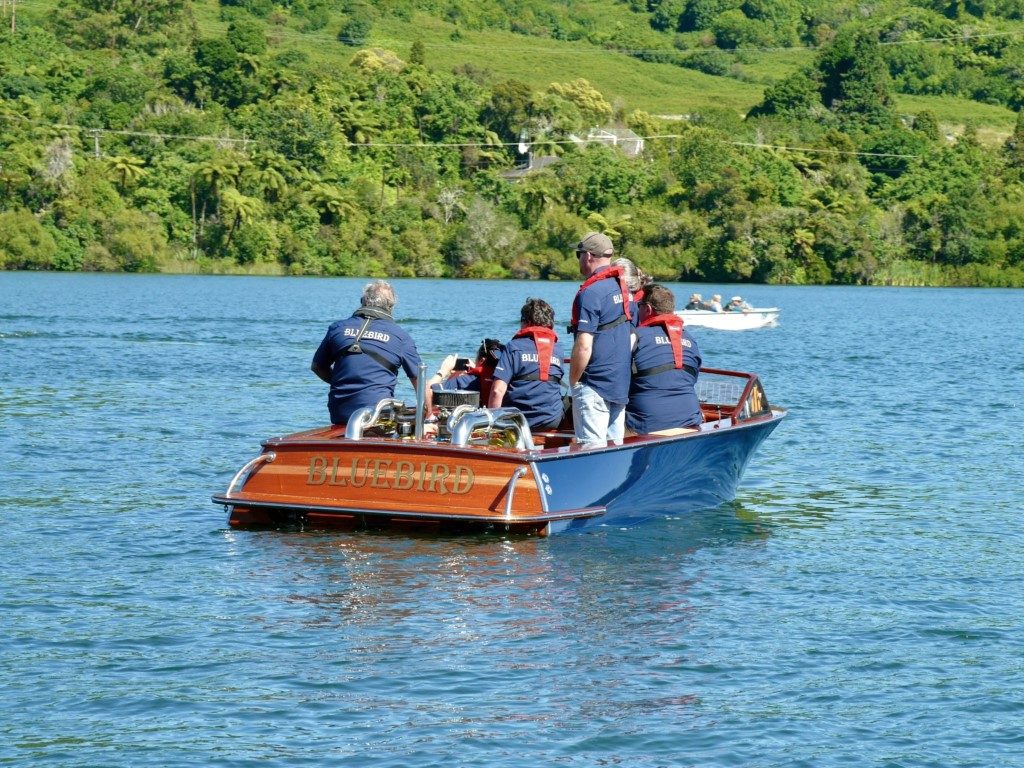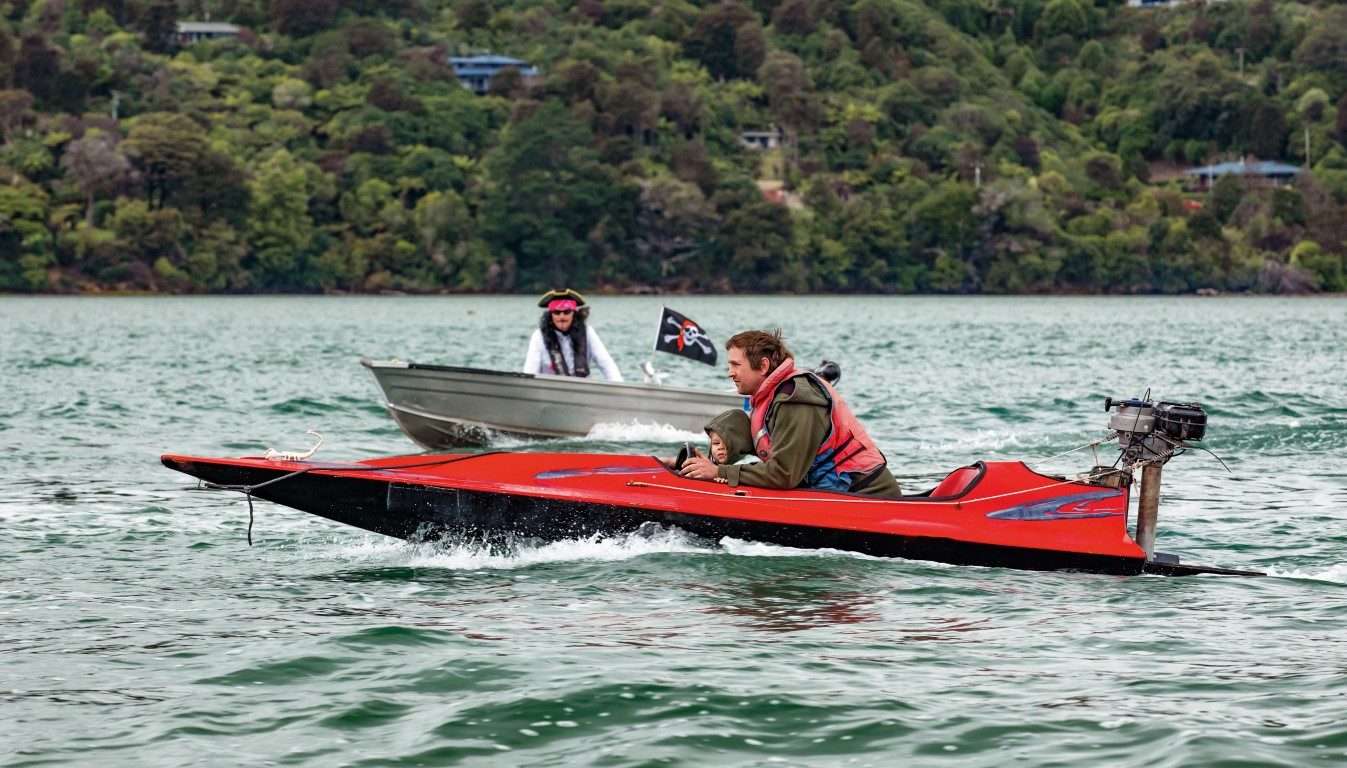

“How does it feel to be part of an eccentric outfit?” I asked Vinnie, the younger of the Seagull Smiths of Havelock in the Marlborough Sounds, asks Alex Stone. Photos by Lesley Stone.
Mate, it’s way worse than that,” he allowed. “It’s a full-on obsession.”
And I reckon he’s right. For between them, the Smith family – patriarch Graham, kuia Sharyn and other brother Jason – own around 200 British Seagull outboard motors. Exclamation mark. Make that a couple more.

And here’s the thing: this isn’t the biggest Seagull collection in New Zealand. That accolade currently goes to Graeme and Jan Keegan of Waitara in the ‘Naki (yes, where all the hard-case characters come from).
They also run a business called Simply Seagulls, supplying spare parts and free advice to the many other Seagull fans throughout the country. They meld the business with a retirement life on the road, sharing their campervan with their stock of Seagull bits and pieces. The business, says Jan with classic Kiwi understatement, “is pretty casual.”
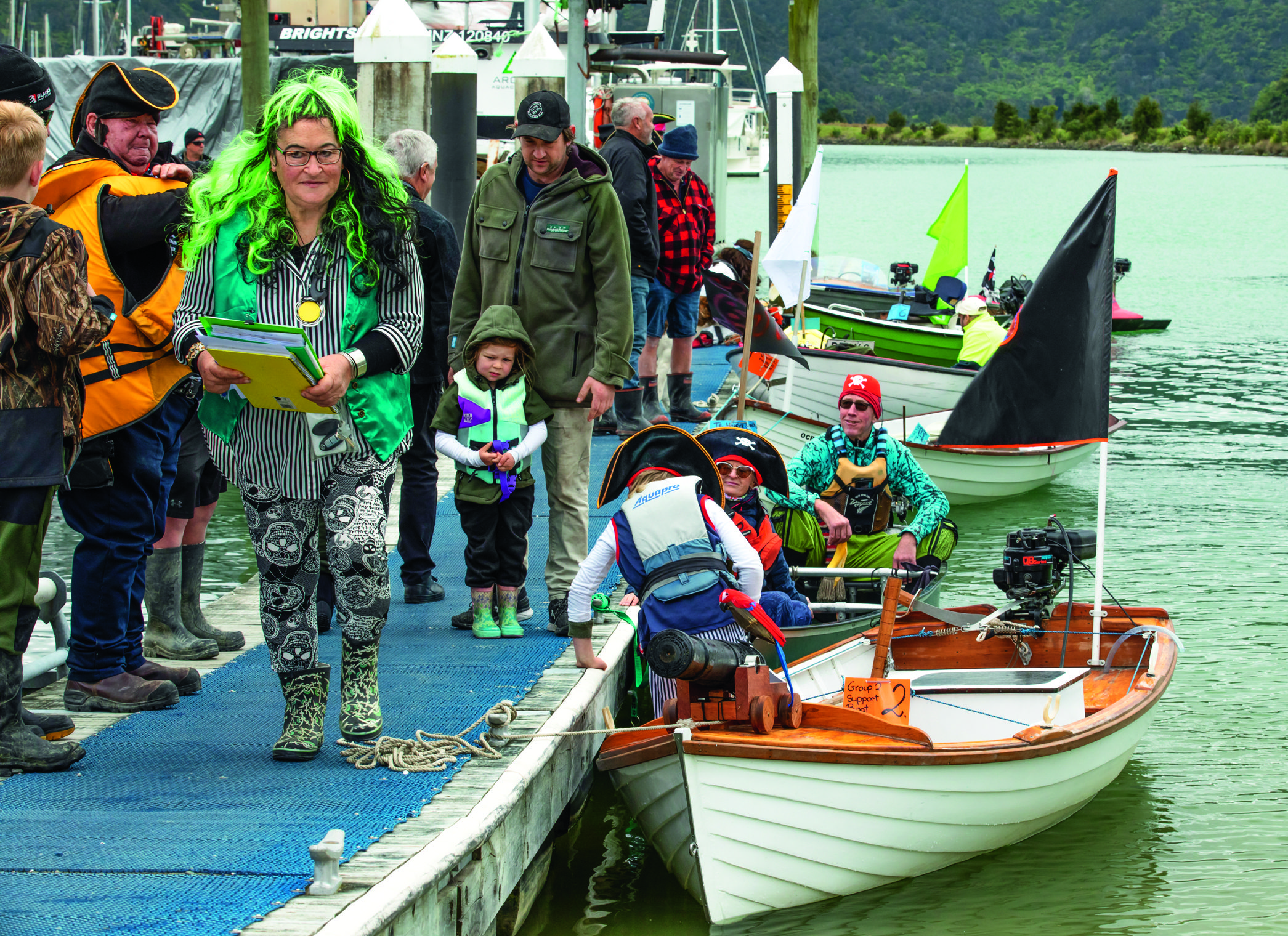
They were instrumental in launching an epic 140km, multi-day Seagull event down the Waikato River – held every year at Easter. The longest Seagull-powered voyage in the world. They also run Seagull races at Waitara on the estuary there. The Waikato rally is now run by John Chricton and Ross Ledger. The tradition lives on. Indeed, it gets stronger and more famous every year. [See box]
Previously, the country’s biggest Seagull collection – 480 motors – belonged to an ‘old fulla’ in Taupo, says Graham Smith. When that collector passed on, Graham bought 30 from his collection. As you do.
Like so many iconic items of ‘character engineering’, British Seagull outboard motors command extraordinary loyalty from their devotees. This may be a mystery to others, but…
The Smith’s remarkable collection, in Havelock, of what has been called both the world’s best and worst outboard motor, is in various states of repair: some running well, almost purringly (this is surprising to anyone who knows Seagulls).
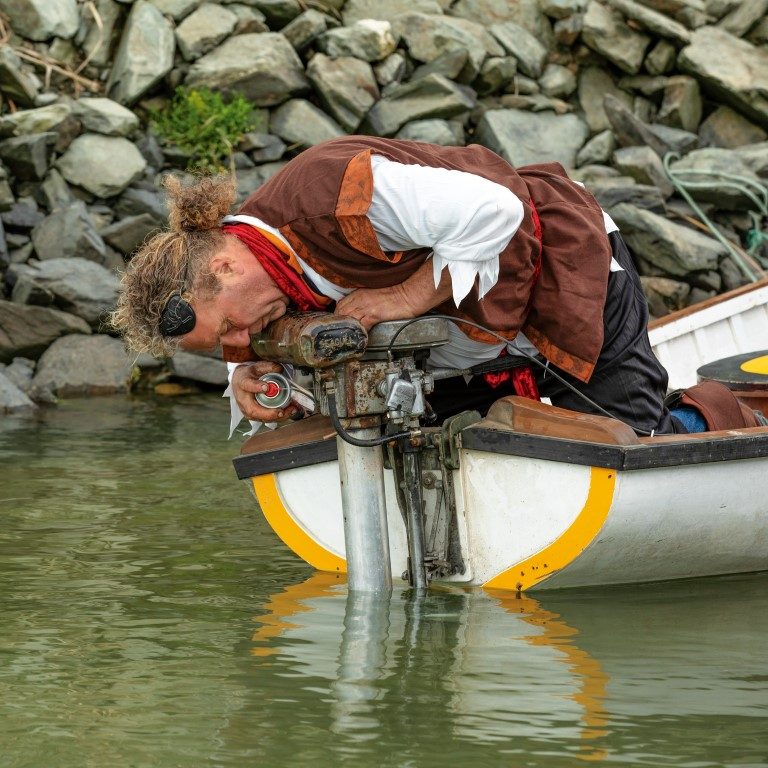
Some are hidden under dust covers, awaiting further ministrations; some in scattered bits; others draped in tinsel in a reverent window display at Graham’s workshed/office, just off Havelock’s main street. A 1.5hp sweetie that, says Graham, “could be used to make a milkshake.” Some, surprisingly, are brand-new.
We met Graham in Havelock earlier this year, and Lesley could not resist the call to return to photograph the October Te Hoiere Seagull Fleet event. Twenty-five boats were there to greet her. British Seagull outboard motors and the Te Hoiere Fleet outings are big in Havelock.

During our previous visit to Vinnie’s shed, he was busy tuning up two new Italian-manufactured (!) Seagulls he had secretly bought for his Mum and Dad as an anniversary present. Just in case they didn’t have enough already…
Trouble was, in the small town gossip mill of Havelock – actually an inadvertent text message that someone-not-supposed-to happened to see – Graham and Sharyn already knew about the surprise gifts. No matter. Always room for more Seagulls in the shed.
All this enterprise finds its focus in the very popular Seagull outboard events, held five times a year. The Smiths and other members of the local Te Hoiere Seagull Fleet – plus other Kiwi Seagull enthusiasts from far afield – charge around a loop course up the Pelorus River delta, under a tunnel of willows on crystal-clear water, round a turning mark above a shingle bank, and back downstream via another arm of the river delta.

The rules are simple: any boat is allowed (the more oddball the better) as long as it’s powered by a British Seagull outboard. Each day has a dress-up theme, which the contestants take to outrageous heart, mixing and matching with their obligatory lifejackets. And colourful, home-made banners fluttering from each racing boat are a must.
Other custom refinements include steering arms at the end of rope and pulley systems, and sometime, ingenious re-fuelling systems that mean the skipper won’t need to stop en-route.

Te Hoiere Seagull Fleet days are big events in Havelock, and this normally quiet little town becomes a-bustle with colour, as the boats parade down the main street, flags flying. They’re then launched at a slipway by a mussel factory at the head of the marina. As the Seagulls are fired up, the spectacle naturally becomes somewhat muted with a haze of blue, two-stroke smoke – and sometimes blue language too.
Apart from prizes for just about every conceivable category, contestants are also aiming for a public dressing down by the Havelock Harbourmaster for exceeding eight knots in the marine approach channel – but so far no-one has received this particular distinction. The greater challenge is simply to finish the race. About half the fleet didn’t on the day of Lesleys’ photo safari. Instead, they usually de-camp to the local historic pub for a solid post-race yarn. And a frosty beer or two.
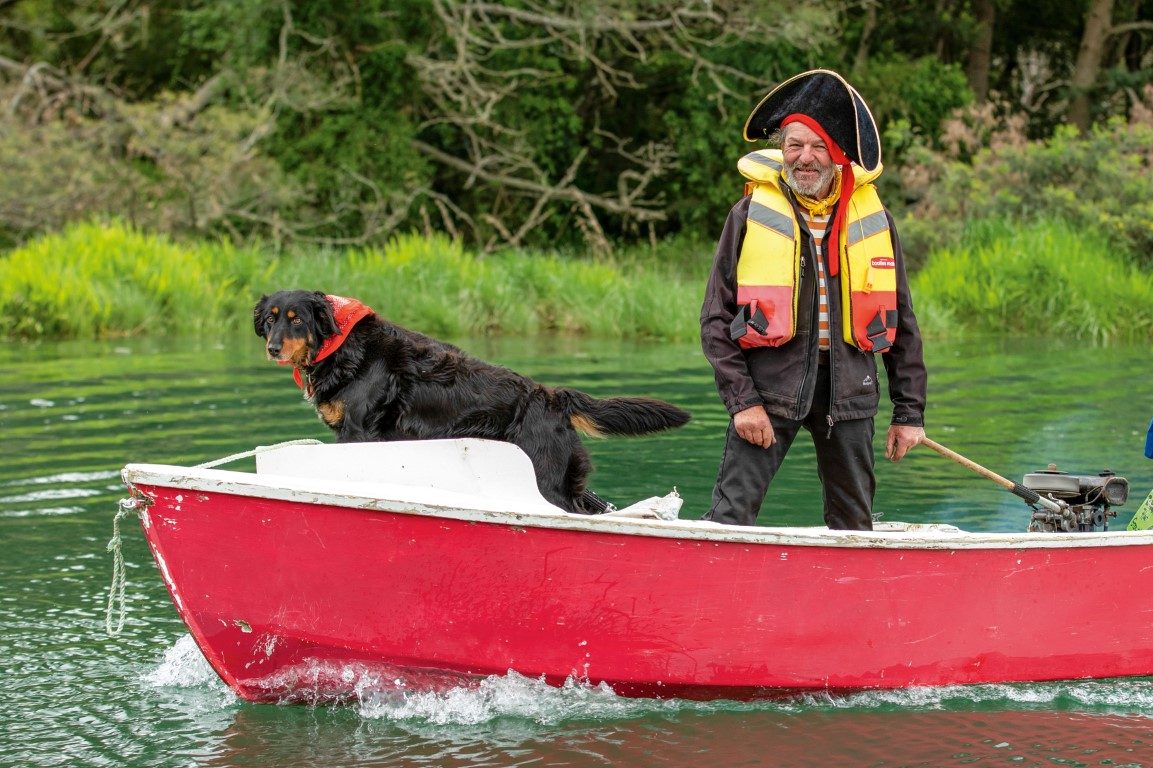
The prize-giving, presided over by Sharyn (as colourful a character as Graham), is also a feast of Kiwi cuisine delights: crayfish sharing the table with paua and whitebait fritters. And asparagus rolls. And cheerios. And lollies. All for a good cause – says Sharyn. “The Charity we support is the Nelson-Marlborough Rescue helicopter. It is a lifeline for our Pelorus communities, which cover a vast area. Many settlements are accessed by boat only, especially since the recent flooding and slips in the area.
“While there is no membership or entry fee for members/supporters/invited guests, the after-match functions are held at the Havelock Hotel or community hall, there is a koha entry fee for lucky number draw, and a named attendance for entry is recorded for contract tracing, as well as right of entry to the event.”

The Fleet has five events during the year, with different courses on Te Hoiere Awa/river estuary and around Twiddles Island (approximately 16km), with different themes.
Sharyn’s race report for October’s outing reads: “Several breakdowns on the way, apparently reported that a couple of boats were running on high-octane water, with a bit of rust mixed in. Our support video boat also needed a support boat to continue around the course. Mysteriously, the orange marker for the willows disappeared and a few boats went straight ahead before they were called back.
“The rapids at the top of the island caught out several boats, broken springs and uncooperative motors, Shady Lady [Sharyn’s own bright-green boat] hitched a tow, with Wakavale, passing a few boats which had broken down. Around the corner at Kowhai Terrace, was the landing spot for five of the boats, who ended up either getting towed in, or a vehicle came and picked them up (including Captain Splash and Archie, his crew).”
The ‘broken springs’ are the sacrificial pins that snap when the propeller hits an underwater obstacle. They’re very necessary in this race – along with a healthy dose of luck, or just a prayer that the motor keeps going. Being small and light also helps with Seagull outboard events. The fastest at this outing was young Caleb Huddlestone in his boat Sonic.

The December race, says Sharyn, “is our ‘Christmas Extravaganza theme, starting with a parade of the fleet, from outside Havelock Hotel, Inglis Street, down to the Havelock marina to the commercial launching ramp. This is the Annual Race for the Fleet. With trophies for first boat home, first team, first lady and tamariki.
“Warning in advance, all boats will be required to have a flag. No flag, I will fine the boat, and the crew will be required to do a song at the after-match function.”
So that’s the message to all planning on joining Te Hoiere in December. Or preparing for the big one down the Waikato at Easter 2023.
It’s certain British Seagull outboard motors, and ultra-keen enthusiasts, will never die – well in this far-flung corner of the once-was-Empire, anyway.
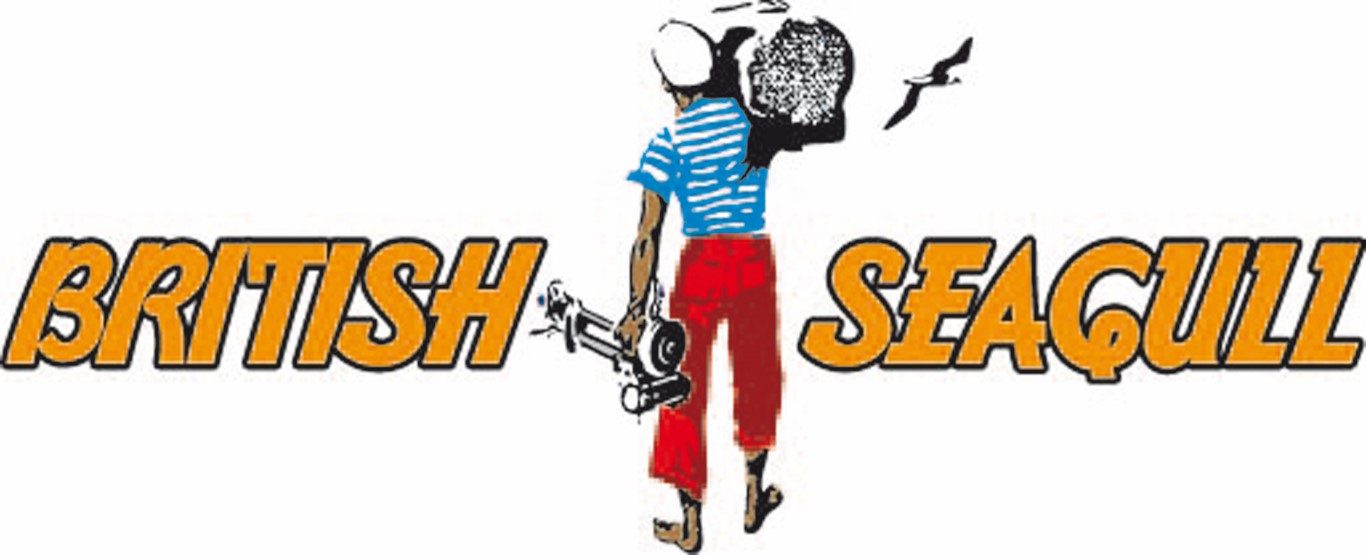
ON RELIABILITY AND SEAGULLS
The two men credited with the development of the Seagull outboard are John Way-Hope, who had worked for Evinrude, and Bill Pinniger, a design engineer. They met while working in the marine division of the Sunbeam Motor Company.
They bought the manufacturing rights and patents for Marston Seagull engines and set up the Bristol Motor Company. They managed to buy those patents with the money they made wheeling and dealing in light aircraft and expensive sports cars.
By 1938 they’d settled on the design that was to become the British Seagull. To celebrate moving into new premises on the Quay at Poole, Dorset, Marston Seagull was changed to British Seagull.
They proclaimed their creation ‘The Best Outboard Motor in the World’ – later changed to ‘The Best Outboard Motor for the World’ (my emphasis). A subtle shift with perhaps hidden meaning.
Always keeping things simple, they reduced the British Seagull range to just one engine. Reverse gears were done away with: Way-Hope reckoned they were “a rather sissy refinement, rendered superfluous by efficient boat handling.”
Still, they patented a ‘Positive and Self-Adjusting Free-Engine Clutch.’ And they thought it was so good that no real alteration to the 1938 design was considered until the mid-1960s.
During WWII the British Admiralty’s request for a ‘rough and ready’ version of the ‘102’ for use on light assault craft helped to solidify the company’s prospects.
The engine needed little alteration for the design brief: the Navy wanted an engine that would run non-stop for 24 hours. Just once, for commando raids. How they maintained the requisite stealth is anybody’s guess.
In the end Seagulls developed a worldwide reputation as a no-nonsense design that could cope with temperature extremes from the Antarctic to the tropics. Perhaps more importantly, they were “able to sustain considerable user abuse [for me this often included verbal-] and total immersion.”
Birds of a Feather DVD
The Waikato Seagull Rally has been immortalized in the 2016 award-winning documentary film Birds of a Feather from Working Edge Pictures, directed by Nina Wells, which followed the 30th running of the event. With original music by Jessie Leov.
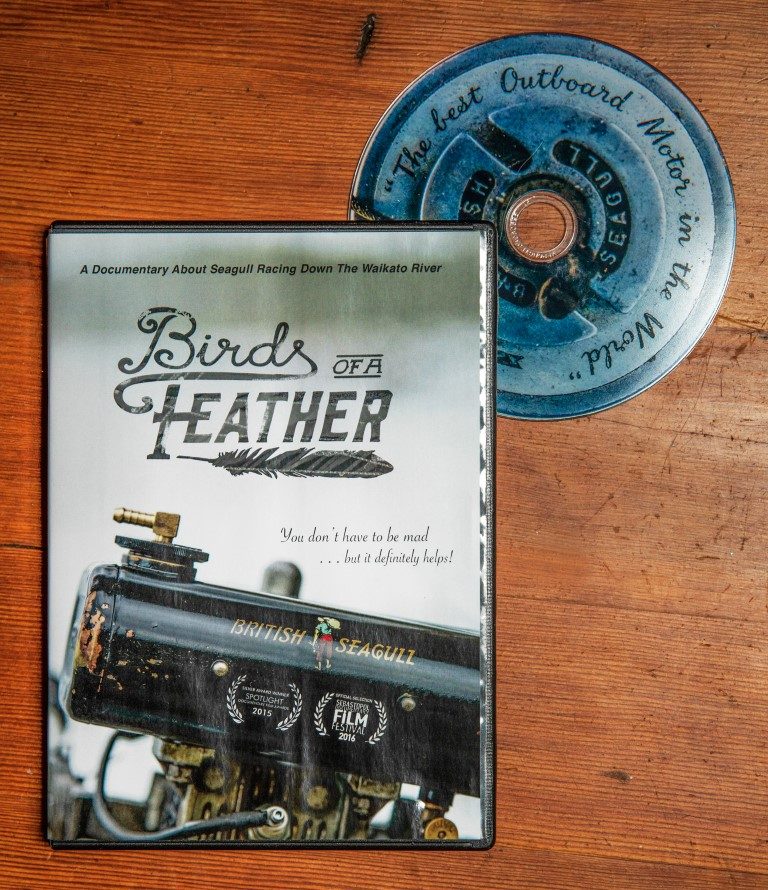
From the sleeve notes: “The British Seagull, once touted as ‘The best outboard motor in the world’ is now famous for all the wrong reasons. With a reputation for being hopelessly unreliable, the British Seagull is a relic of modern technology dating back to the Second World War.”
An interesting sub-plot in the film concerns the two clever Team New Zealand engineers (who shall remain nameless here) who built a high-tech, super-sleek boat for the race – only to be thwarted by a British Seagull that didn’t run quite as smoothly as planned. Even their back-up motor conked out. Game over.
There’s also a video of the October Te Hoiere Seagull Fleet event:


